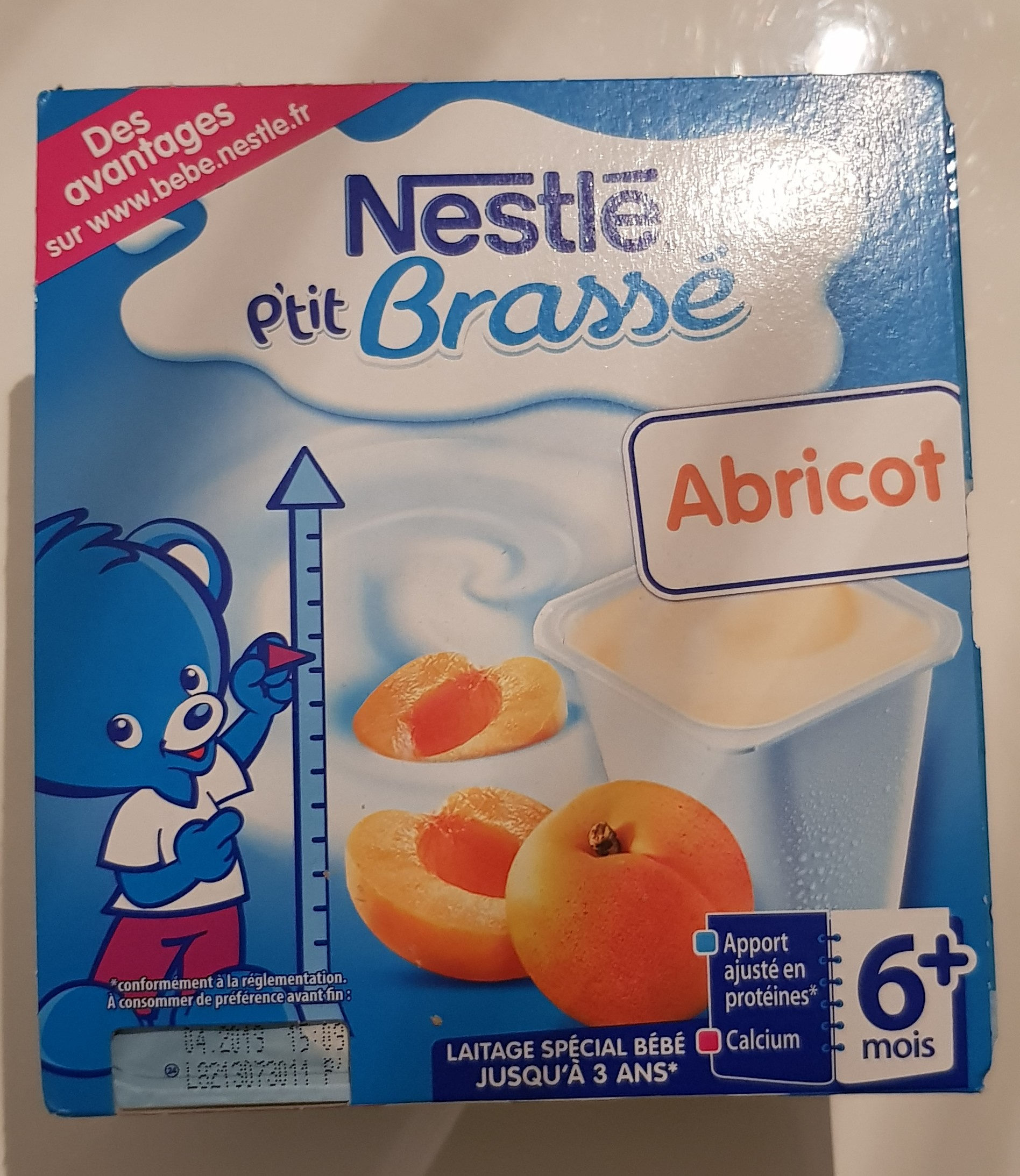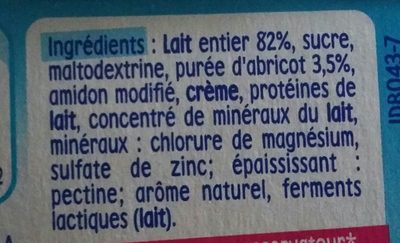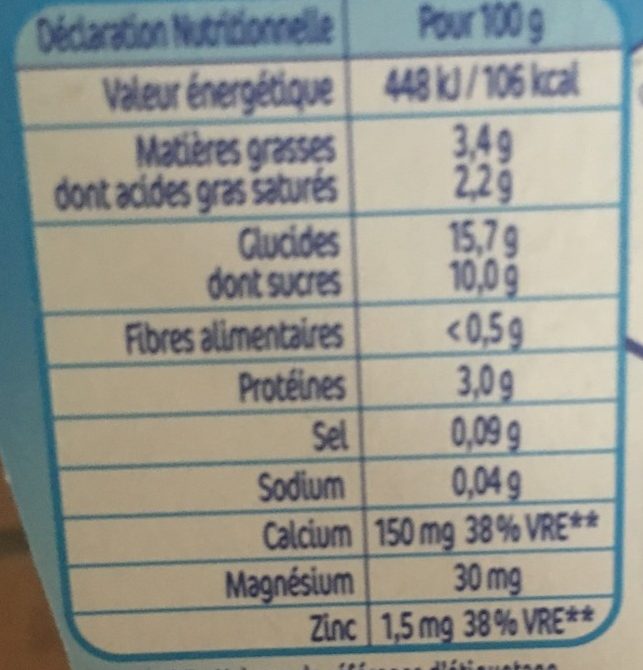Ptit brassé abricot - Nestlé Bébé - 400 g e (4 * 100g)
This product page is not complete. You can help to complete it by editing it and adding more data from the photos we have, or by taking more photos using the app for Android or iPhone/iPad. Thank you!
×
Barcode: 7613035025820 (EAN / EAN-13)
Quantity: 400 g e (4 * 100g)
Packaging: Plastic, Cardboard, Fresh
Brands: Nestlé Bébé, Nestlé
Categories: Dairies, Fermented foods, Fermented milk products, Desserts, Dairy desserts, Baby foods, Fermented dairy desserts, Fermented dairy desserts with fruits, Snacks and desserts for babies, Yogurts, Fruit yogurts, Stirred yogurts, Apricot yogurts, Dairy dessert for baby, Fruit stirred yogurts
Labels, certifications, awards:
No preservatives, Green Dot, No colorings
Traceability code: DE TH 601 EG
Link to the product page on the official site of the producer: https://www.bebe.nestle.fr/nos-marques/p...
Countries where sold: France
Matching with your preferences
Environment
Carbon footprint
Packaging
Transportation
Report a problem
Data sources
Product added on by openfoodfacts-contributors
Last edit of product page on by packbot.
Product page also edited by beniben, bobobeauvais, kiliweb, moon-rabbit, roboto-app, tacite, yuka.R0lkZEFwNWJodlkzbk5vejNCSFU0STFweWNINVRHRHRlOEFJSWc9PQ, yuka.YjRJUkRLWVloS1JYdnNjYjlVMkY5OWRIeFlXNFJ6S1FGdUE5SVE9PQ.








